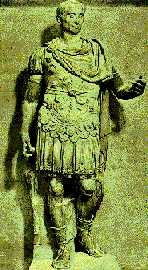

Members' Pages
This page is reserved for contributions from members and school pupils.
This item was provided by Peter Duncan.
The Date of the Burning of Dunning (Calendar Confusion)

The Thorn Tree was planted in Dunning to remind the inhabitants for all time of the terrible burning of the village on a cold winters day in January after the Battle of Sheriffmuir. The battle took place in November 1715. It follows that the village was burnt in 1716, but the plaque beside the tree states 1715. Why the difference?
In 1715 this country was using the Julian Calendar introduced by Julius Ceasar. This calendar was slightly inaccurate and was adjusted by the Gregorian Calendar introduced into the continent in the 16th century. Great Britain did not adopt the Gregorian Calendar until 1752. This was further complicated by the British practice of beginning the year on 25th March (Lady Day, the Feast of the Annunciation of the Virgin Mary). Businesses dealing with the continent took the double dating in their stride. Letters were dated, for example: 19th/30th January 1715/1716. By this time the British Calendar was 11 days different from the continent.

To support this further the fiscal and tax year in this country still commences on 6th April - 25th March plus 12 days. Also, any good dictionary will confirm that the word December is derived from Latin number ten, being the tenth month of the Roman Year. (Similarly September to November are derived from Latin 7 to 9.)
From this we see that the burning of Dunning in January was 1715 as the year 1716 did not start till 25th March.
Webmaster's Note
Peter has put a great deal of effort into his research for the above. Among his references is a book: The Royal Historical Society Guides and Handbooks No.4 - Handbook of Dates For Students of English History. Editor C.R. Cheney Cambridge University Press. ISBN 0-521-55151-X. This fascinating book describes just how confusing dates can be. It discusses how often the dates on documents are wrong, and the many reasons for this, and gives much information to help with correcting date estimates. It notes that Samuel Pepys reckond the years in his diary from 25th March. The change from the Old Style Julian Calendar to the New Style Gregorian Calendar is fully documented. Page 11 notes: In Great Britain and Ireland the change was effected by Chesterfield's Act (24 Geo. II, c.23) passed in March 1751, which decreed that throughout the dominions of the British Crown the following 1st January should be the first day of 1752 and 2nd September 1752 should be followed by 14th September. I recommend anyone with an interest in historical dates to study this book.